
|
|
Abalone

Haliotis sp.
Young abalone with a shell size of less than 3 cm take shelter within the spines of sea urchins for protection. |
|

|
|
Bat Star

Asterina miniata
When two bat stars bump into each other they begin a slow-motion “arm wrestling” match. Each sea star tries to get its arm on top of the other’s arm. |
|
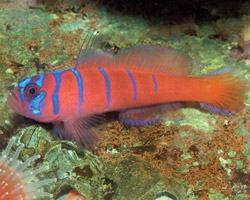
|
|
Bluebanded Goby

Lythrypnus dalli
These peaceful fish are often territorial with members of their own species. |
|
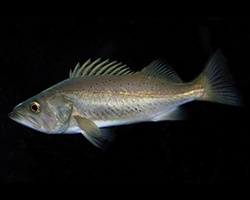
|
|
Bocaccio

Sebastes paucispinis
The bocaccio can live up to 45 years. |
|
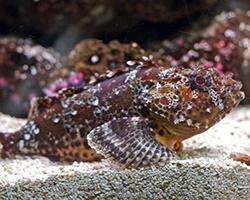
|
|
California Scorpionfish

Scorpaena guttata
The California scorpionfish has venom in its spines. |
|
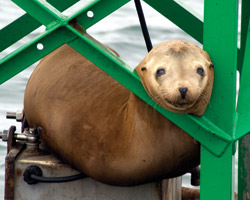
|
|
California Sea Lion

Zalophus californianus
Sea lions use their long front flippers to steer and propel themselves through the water. |
|

|
|
California Spiny Lobster

Panulirus interruptus
California Lobsters do not have front claws. |
|
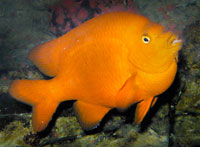
|
|
Garibaldi

Hypsypops rubicundus
Garibaldi is the California State marine fish. |
|

|
|
Garibaldi, juvenile

Hypsypops rubicundus
Garibaldi is the California State marine fish. |
|

|
|
Giant Kelp

Macrocystis pyrifera
Under ideal conditions, giant kelp can grow about two feet a day. |
|

|
|
Giant Kelpfish

Heterostichus rostratus
The giant kelpfish can quickly change color during courtship or territorial displays. |
|
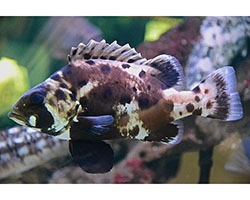
|
|
Giant Sea Bass

Stereolepis gigas
This fish is huge, growing over 7.5 feet long and weighing over 500 pounds. |
|

|
|
Green Sea Anemone

Anthopleura xanthogrammica
Some fishes develop resistance to the green anemone's sting by covering themselves with mucus. |
|

|
|
Harbor Seal

Phoca vitulina
The Harbor seal is the most widely distributed species of pinniped. |
|

|
|
Hermit Crab

Pagurus sp.
Hermit crabs protect their rear ends by hiding it in a snail shell. |
|

|
|
Horn Shark

Heterodontus francisci
The female horn shark lays a distinctive spiral-shaped egg case. |
|

|
|
Kelp Bass

Paralabrax clathratus
Kelp bass reproduce by spawning (release egg and sperm into the water column) and form large aggregations in the summer months. |
|

|
|
Leopard Shark

Triakis semifasciata
Leopard sharks are bottom feeders and are named because of their stripes. |
|

|
|
Masking Crab

Loxorhynchus crispatus
The masking crab decorates itself with bits of algae, sponges and bryozoans. |
|

|
|
Moray Eel

Gymnothorax mordax
This eel's favorite prey is the octopus. |
|

|
|
Norris' Top Snail

Norrisia norrisi
These snails travel up and down kelp every day. |
|
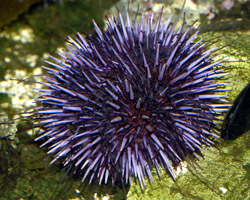
|
|
Purple Sea Urchin

Strongylocentrotus purpuratus
Sea urchins have tube feet, which they use for attachment, locomotion and feeding. |
|

|
|
Sargo

Anisotremus davidsoni
The sargo is the largest of the Pacific grunts. |
|

|
|
Southern Sea Otter

Enhydra lutris nereis
Sea otters do not have blubber to keep warm, instead they have very dense fur (up to one million hairs per square inch). |
|

|
|
Swell Shark

Cephaloscyllium ventriosum
When stressed, the swell shark can “swell” by inflating its stomach by swallowing water. |
|

|
|
Western Gull

Larus occidentalis
The Western gull typically lives about 15 years, but can live to at least 25 years. |
|
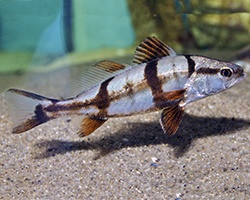
|
|
White Seabass

Atractoscion nobilis
The white seabass is the largest species of croaker in California. |
|

